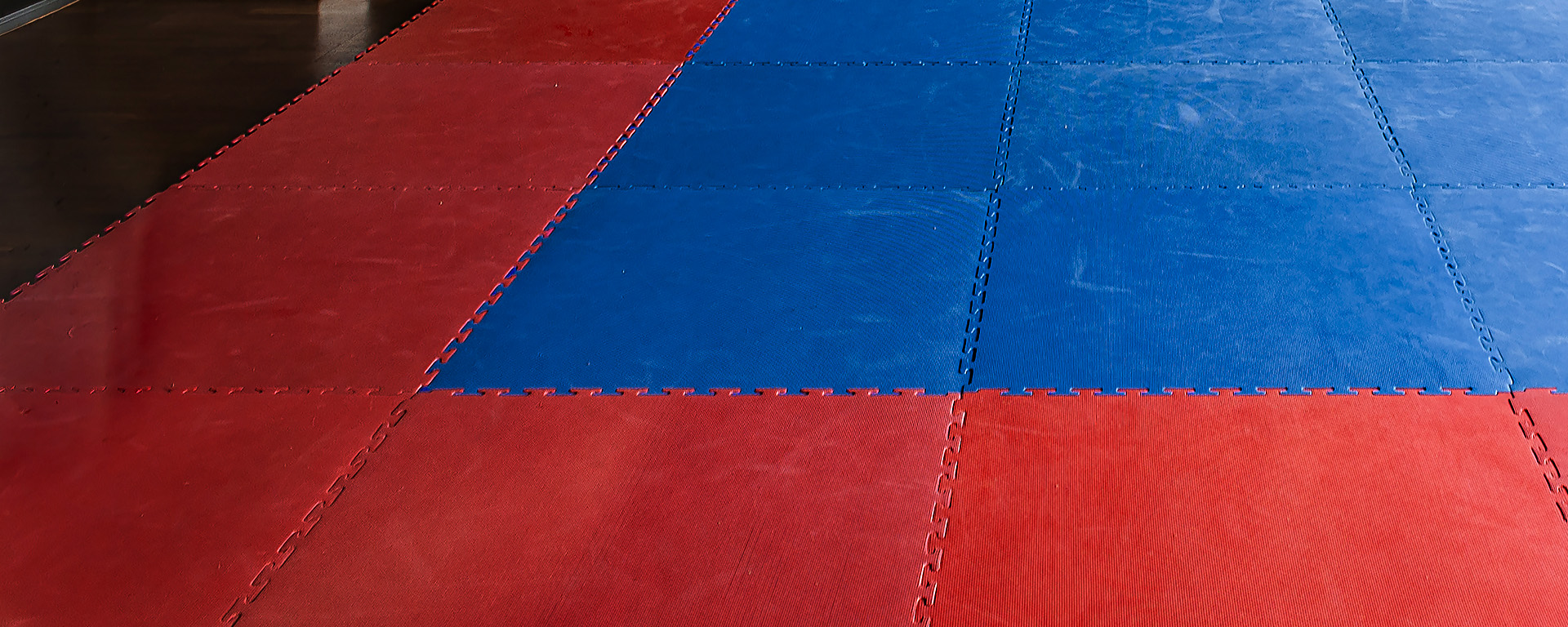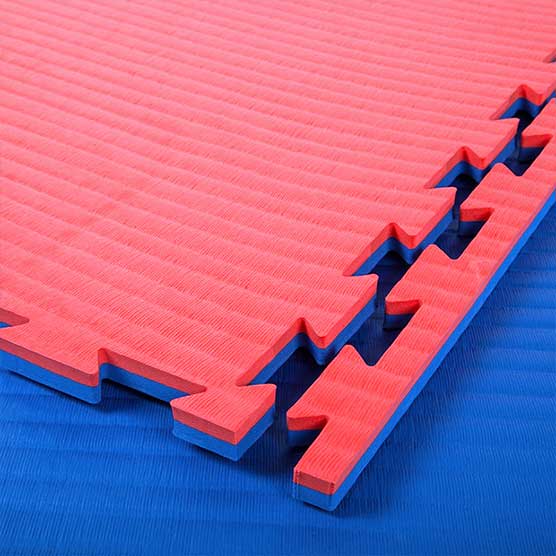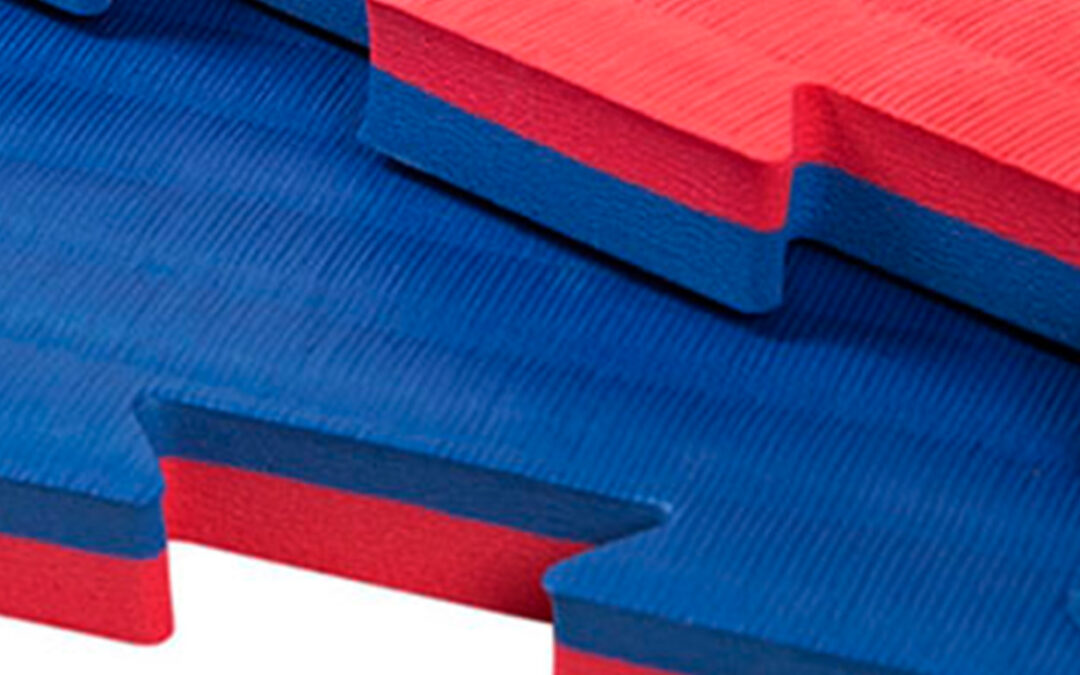What is the Tatami?
The choice of a specific sports flooring alternative depends on the specific needs of the sport or training. Some sports, such as fitness, are suited to PVC puzzle tiles, others to flexible mats and trampolines, and others to oak parquet or rubber tiles. Each material has its own benefits and limitations, so it is important to consider safety requirements, comfort, portability and other factors when choosing the right sports surface.
Tatami matting is a multi-purpose product that finds use in sports environments as well. Its specific features and construction offer ideal conditions for many sporting activities, especially martial arts and training.
Tatami puzzle tiles are a variant of Tatami mats. They are in the form of puzzle pieces. These pieces are stacked together to create a solid surface that provides the same benefits as a traditional Tatami mat.

Tatami puzzle mats are usually made of high-quality foam or EVA material (ethylene vinyl acetate) that is durable, flexible and lightweight. Each piece is typically between 1 cm and 4 cm in size and thickness. These pieces have protruding edges on one side and recesses on the other side that fit together perfectly, creating a strong and secure connection between the pieces.
Tatami puzzle mats are often available in a variety of colours and can be purchased as sets with different numbers of pieces, allowing the size of the surface to be adapted to the needs of the space. When used, they can be used to create smaller mats or areas for individual exercise, as well as larger areas for training areas and sports halls.
Due to their modular nature, Tatami puzzle mats are easily portable and assembled. The pieces can be easily assembled or disassembled as needed and transported to another location. This means that the Tatami puzzle mat is suitable for sports activities that require portable and flexible training mats, such as yoga, fitness, martial arts and more.

How does this Tatami surface help?
One of the main reasons Tatami mats are used in martial arts is their ability to absorb shock and provide protection from injury. Tatami mats are made of strong materials that can absorb the energy of an impact and disperse it throughout the surface. This minimizes the risk of injuries, especially during falls, throws and kicks. The Tatami mat thus provides a safe environment for training and matches where intense physical activities often occur.
Another advantage of Tatami is their surface texture. Their surface is soft but slippery enough to allow movement and rotation without excessive friction. This is especially important for sports such as judo, karate, taekwondo or jiu-jitsu, which require throwing, crawling on the ground and fast movements. The tatami mat allows athletes to move easily over the surface and perform techniques without worrying about slipping or moving uncontrollably.
The Tatami mat also offers excellent acoustic properties. Its surface absorbs sound and minimizes echoes in the room. This is especially beneficial in martial arts training, where strong striking sound is often used. The acoustic insulation takes noise away and helps keep the environment calm and focused.
Last but not least, the tatami mat is also easy to maintain and hygienic. It is made of natural materials that are resistant to mold and bacteria. The surface of the mat is easy to clean and resists wear and tear. This is especially important in sports hall environments where sweat, dust and bacteria are often present.

